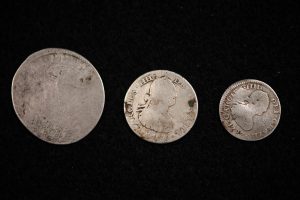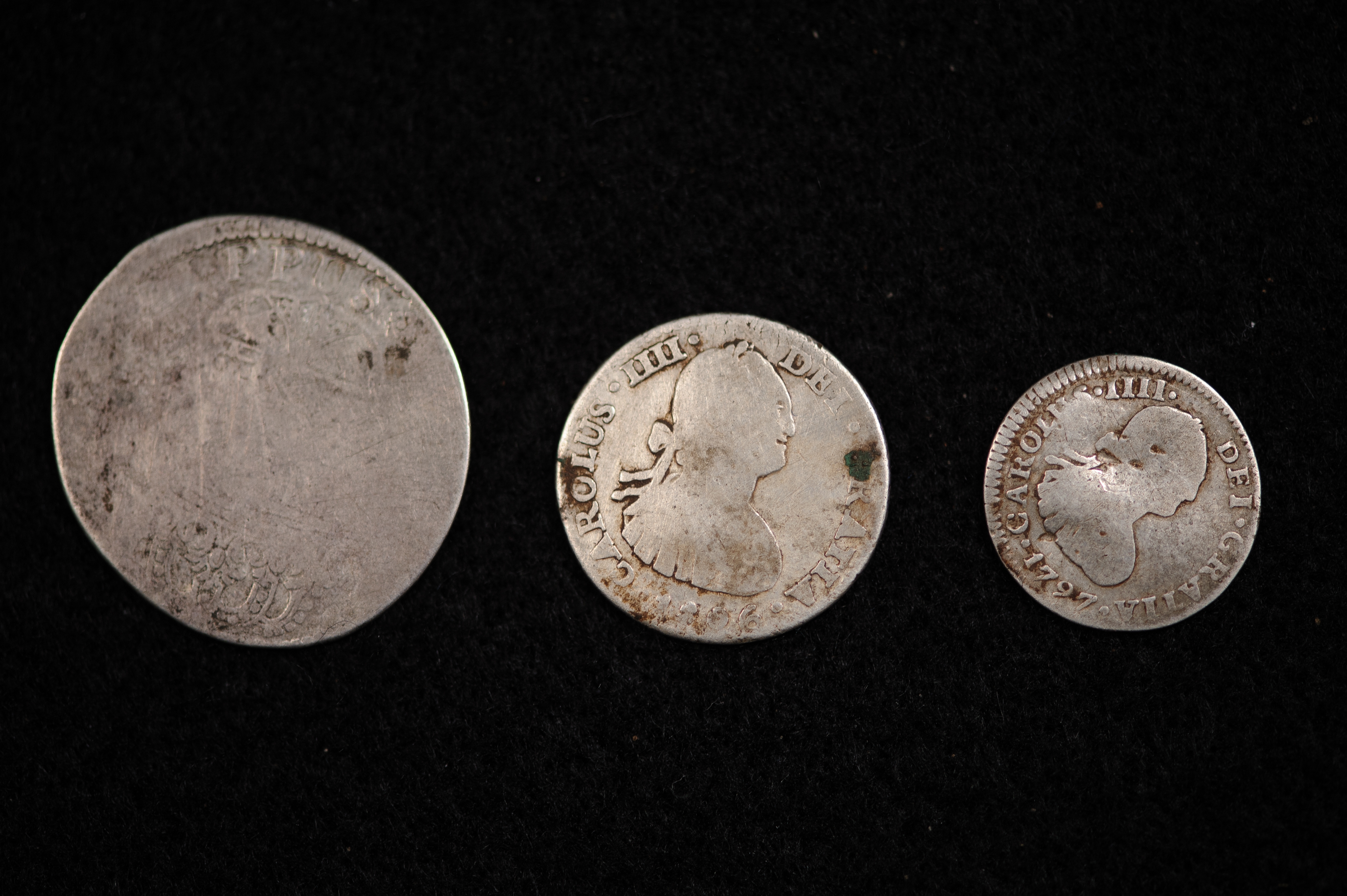
The silver Spanish reales were recovered by the Office of Archaeological Research in 2013 while excavating in downtown Tuscaloosa before the construction of the Embassy Suites on University Boulevard. The largest of the three is a shield-type real minted between 1572 and 1621 in Peru; the second was minted in Mexico City in 1806; and the smallest, also minted in Mexico, dates from 1797.
The corner where Embassy Suites now stands is one of the longest-occupied blocks in the city of Tuscaloosa, and between 1829 and 1841 was home to Alabama’s first chartered state bank. Though the United States had begun minting coins in 1793, Spanish reales were still accepted as legal tender in the states, as they had been throughout the colonial period, on the grounds that the metals of which the coins were made, in this case silver, had value no matter which country produced it.
The Archaeological Collection holds more than one million artifacts, associated documents and photographic images documenting the history of human occupation in the southeastern United States and beyond. Artifacts from Moundville Archaeological Park, the site of one of the largest prehistoric Native American settlements in North America, form a major part of the collection. The collection is housed at the Erskine Ramsay Archaeological Repository, and supports collection–based research both at home and abroad by students, academics and professionals.
WIlliam R. Allen, archaeology collections manager for The University of Alabama Museums, provided the above information.
